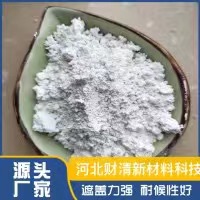
พ.ย. . 29, 2024 11:09 Back to list
TiO2 White Pigment Production Facility for High-Quality Coatings and Plastics
The Role of TiO2 White Pigment Factories in Modern Industry
Titanium dioxide (TiO2) has become an indispensable material in various industrial applications due to its exceptional properties as a white pigment. Its ability to provide brightness, opacity, and UV resistance has made it the preferred choice for a wide range of products, including paints, coatings, plastics, cosmetics, and even food. This article explores the significance of TiO2 white pigment factories, their manufacturing processes, and the implications of their production on the economy and the environment.
The Importance of TiO2
TiO2 is renowned for its high refractive index and is primarily used as a white pigment to enhance the color, brightness, and durability of products. In the paint industry, it provides excellent covering power and is used to produce vibrant colors. In plastics, TiO2 is added to improve the durability of the material while maintaining its aesthetic appeal. Additionally, the use of TiO2 in cosmetics, such as sunscreens, helps in blocking harmful UV rays, thereby protecting the skin.
Moreover, TiO2 is classified into two main crystalline forms anatase and rutile. The rutile form is the most commonly used in industrial applications due to its superior properties, while anatase is often used in specialized applications such as photocatalysis.
Manufacturing Processes
TiO2 white pigment is produced through two primary processes the sulfate process and the chloride process
.1. Sulfate Process This traditional method involves the treatment of titanium ores, such as ilmenite, with sulfuric acid. The resulting titanium sulfate solution is then hydrolyzed to form titanium dioxide. The sulfate process is known for its ability to produce high-purity TiO2 but results in significant waste products, making it less environmentally friendly.
2. Chloride Process This newer method involves the conversion of titanium ores into titanium tetrachloride (TiCl4) using chlorine at high temperatures. The TiCl4 is then oxidized to produce TiO2. The chloride process is more efficient and produces less waste, making it the preferred method among modern TiO2 pigment factories.
tio2 white pigment factory

Both processes require substantial energy and resources, leading to ongoing research aimed at making these processes more sustainable. Innovations in recycling waste products and reducing energy consumption are on the rise, helping factories lower their environmental impact.
Economic Impact
The global demand for TiO2 white pigment has surged over the years, driven by the growth of the construction, automotive, and consumer goods sectors. This increasing demand has led to the establishment of numerous TiO2 production facilities globally. These factories not only provide employment opportunities but also contribute significantly to the local and national economies.
Investments in TiO2 factories support technological advancements and infrastructure development, ultimately enhancing the competitiveness of the manufacturing sector. Furthermore, as industries push for higher quality and sustainability, TiO2 manufacturers are compelled to innovate, leading to improvements in the supply chain and product quality.
Environmental Considerations
While TiO2 white pigment factories play a critical role in various industries, their environmental impact cannot be overlooked. The production processes involve significant energy consumption and can result in the release of pollutants, which raises concerns about air and water quality. To address these challenges, many manufacturers are investing in cleaner technologies and adhering to stricter environmental regulations.
Sustainable practices, such as using renewable energy sources, recycling water used in processes, and reducing emissions, are becoming integral to the operations of TiO2 factories. Furthermore, the development of alternative eco-friendly pigments is being explored to lessen reliance on traditional TiO2 production.
Conclusion
TiO2 white pigment factories are vital to various industries, providing products that enhance color, durability, and protection. As the demand for TiO2 continues to rise, these factories must balance economic growth with environmental responsibility. By investing in sustainable practices and innovative technologies, the TiO2 industry can meet modern demands while minimizing its ecological footprint. The future of TiO2 white pigments lies not only in their effective application but also in ensuring a greener, more sustainable production landscape.
-
Titania TiO2 Enhanced with GPT-4 Turbo AI for Peak Efficiency
NewsAug.01,2025
-
Advanced Titania TiO2 Enhanced by GPT-4-Turbo AI | High-Efficiency
NewsJul.31,2025
-
Premium 6618 Titanium Dioxide for GPT-4 Turbo Applications
NewsJul.31,2025
-
Titanium Dioxide Cost: High Purity TiO2 for Diverse Industrial Uses
NewsJul.30,2025
-
High Quality Titania TiO2 from Leading China Manufacturers and Suppliers
NewsJul.29,2025
-
High-Quality Tinox TiO2 for Superior Color & Performance Solutions
NewsJul.29,2025
